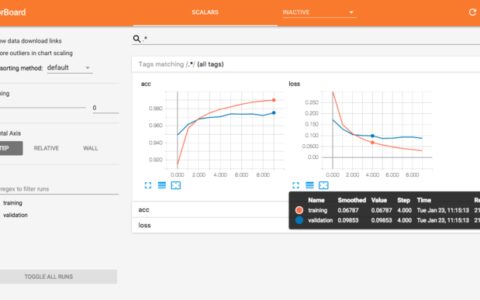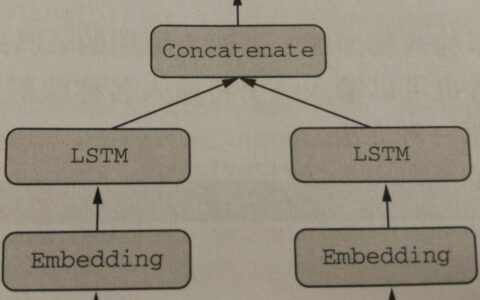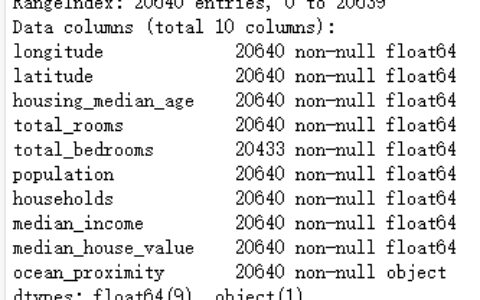下面是关于“浅谈Tensorflow2对GPU内存的分配策略”的完整攻略。
问题描述
Tensorflow2是一种流行的深度学习框架,它可以在GPU上运行以加速模型训练。然而,Tensorflow2对GPU内存的分配策略可能会影响模型的性能。那么,Tensorflow2对GPU内存的分配策略是什么?如何优化模型的性能?
解决方法
Tensorflow2对GPU内存的分配策略
Tensorflow2使用了一种称为“按需分配”的GPU内存分配策略。这意味着Tensorflow2只会在需要时分配GPU内存,而不是在程序启动时分配所有内存。这种策略可以减少内存浪费,并提高模型的性能。
具体来说,Tensorflow2使用了两种内存类型:显存和系统内存。显存是GPU上的内存,用于存储模型参数和中间结果。系统内存是CPU上的内存,用于存储模型的图结构和其他元数据。
在Tensorflow2中,可以使用以下代码来设置GPU内存分配策略:
import tensorflow as tf
# Set GPU memory growth
gpus = tf.config.experimental.list_physical_devices('GPU')
if gpus:
try:
for gpu in gpus:
tf.config.experimental.set_memory_growth(gpu, True)
except RuntimeError as e:
print(e)
在上面的代码中,我们使用了tf.config.experimental.set_memory_growth函数来设置GPU内存分配策略。set_memory_growth函数将GPU内存分配策略设置为“按需分配”,这意味着Tensorflow2只会在需要时分配GPU内存。
示例1:使用Tensorflow2训练模型
以下是使用Tensorflow2训练模型的示例:
import tensorflow as tf
from tensorflow.keras import layers
# Set GPU memory growth
gpus = tf.config.experimental.list_physical_devices('GPU')
if gpus:
try:
for gpu in gpus:
tf.config.experimental.set_memory_growth(gpu, True)
except RuntimeError as e:
print(e)
# Load data
(x_train, y_train), (x_test, y_test) = tf.keras.datasets.mnist.load_data()
x_train = x_train.reshape(-1, 28, 28, 1).astype('float32') / 255.0
x_test = x_test.reshape(-1, 28, 28, 1).astype('float32') / 255.0
y_train = tf.keras.utils.to_categorical(y_train, num_classes=10)
y_test = tf.keras.utils.to_categorical(y_test, num_classes=10)
# Define model
model = tf.keras.Sequential([
layers.Conv2D(32, (3, 3), activation='relu', input_shape=(28, 28, 1)),
layers.MaxPooling2D((2, 2)),
layers.Flatten(),
layers.Dense(10, activation='softmax')
])
# Compile model
model.compile(optimizer='adam', loss='categorical_crossentropy', metrics=['accuracy'])
# Train model
model.fit(x_train, y_train, epochs=10, validation_data=(x_test, y_test))
在上面的示例中,我们使用了Tensorflow2来训练一个简单的卷积神经网络模型。首先,我们使用tf.keras.datasets.mnist加载MNIST数据集,并将数据预处理为张量。然后,我们定义了一个简单的卷积神经网络模型,并使用compile函数来编译模型。最后,我们使用fit函数来训练模型,并输出训练结果。
示例2:使用Tensorflow2进行图像分类
以下是使用Tensorflow2进行图像分类的示例:
import tensorflow as tf
import tensorflow_hub as hub
import numpy as np
from PIL import Image
# Set GPU memory growth
gpus = tf.config.experimental.list_physical_devices('GPU')
if gpus:
try:
for gpu in gpus:
tf.config.experimental.set_memory_growth(gpu, True)
except RuntimeError as e:
print(e)
# Load image
img = Image.open('image.jpg')
img = np.array(img)
img = tf.image.resize(img, (224, 224))
img = tf.keras.applications.mobilenet_v2.preprocess_input(img)
img = tf.expand_dims(img, axis=0)
# Load model
model = tf.keras.Sequential([
hub.KerasLayer('https://tfhub.dev/google/imagenet/mobilenet_v2_100_224/classification/5')
])
# Predict class
logits = model.predict(img)
pred = tf.argmax(logits, axis=1).numpy()[0]
print('Predicted class:', pred)
在上面的示例中,我们使用了Tensorflow2来进行图像分类。首先,我们使用PIL库加载一张图像,并将其预处理为张量。然后,我们使用Tensorflow Hub库加载一个预训练的模型,并使用模型来预测图像的类别。最后,我们输出预测结果。
结论
在本攻略中,我们介绍了Tensorflow2对GPU内存的分配策略,并提供了两个示例说明。可以根据具体的需求来选择不同的示例,并根据需要调整模型的参数来提高模型的性能。
本站文章如无特殊说明,均为本站原创,如若转载,请注明出处:浅谈Tensorflow2对GPU内存的分配策略 - Python技术站


 微信扫一扫
微信扫一扫  支付宝扫一扫
支付宝扫一扫 


